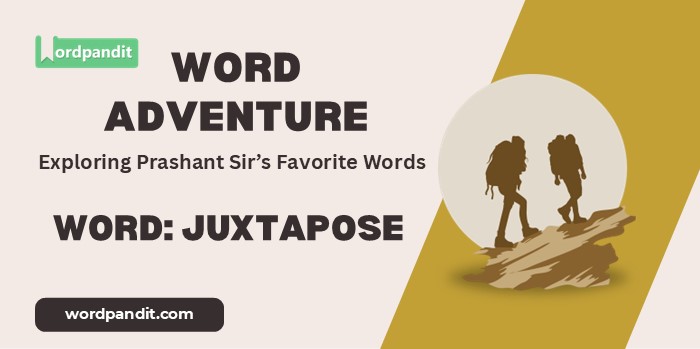Word Adventure: Juxtapose
The Headline
“Juxtapose: When Contrast Creates Meaning”
The Scoop
In the world of creative expression, sometimes the most powerful statements come from placing unlike things side by side. ‘Juxtapose’ is the word that captures this artistic and intellectual technique – a term that helps us understand how contrast can illuminate meaning. Let’s explore how this versatile word enriches our ability to see and create connections.
Let’s Break It Down
The Plot Thickens
The story of ‘juxtapose’ reflects the human desire to find meaning through comparison. The word emerged in the mid-19th century, combining the Latin ‘juxta’ (which gave us words like ‘adjacent’) with the French ‘poser’ (from which we get ‘pose’ and ‘position’).
While relatively young as English words go, ‘juxtapose’ quickly became essential in discussions of art, literature, and photography, where the technique of juxtaposition had long been used to create powerful effects. The word gave name to a practice that artists had instinctively understood for centuries.
Today, ‘juxtapose’ has moved beyond the arts to become a crucial term in fields ranging from sociology to advertising, helping us understand how placing contrasting elements together can reveal new insights and perspectives.
Word in the Wild
The Twist
Here’s an interesting paradox about ‘juxtapose’: while it’s a word about placing things next to each other, its power often lies in revealing the spaces between them. Like a spark jumping between two electrical poles, the energy of juxtaposition often exists in what’s unsaid or unshown – the connections our minds make when we encounter unexpected combinations.
Make It Stick
Juxtapose: When opposites become neighbors and differences tell the story!
Your Turn
Think about powerful juxtapositions you’ve encountered – in art, in life, or in your own creative work. What unexpected combinations have made you see things in a new way? Share your experiences with juxtaposition in the comments below. Let’s explore how contrasts create meaning in our world!
Down the Rabbit Hole
- Curious about artistic juxtaposition? Explore surrealist art, photomontage, or contemporary installation art.
- Interested in literary contrasts? Research how writers use parallel plots and contrasting characters.
- Want to understand social juxtaposition? Look into urban studies and how cities create unexpected neighboring communities.
The Last Word
As we conclude our exploration of ‘juxtapose’, I hope you’ve gained appreciation for this word that helps us understand the power of contrast and comparison. Whether in art, writing, or daily life, juxtaposition reminds us that sometimes the best way to understand something is to see what it isn’t. Until our next word adventure, this is Prashant from Wordpandit, encouraging you to notice the revealing contrasts that surround us all!











